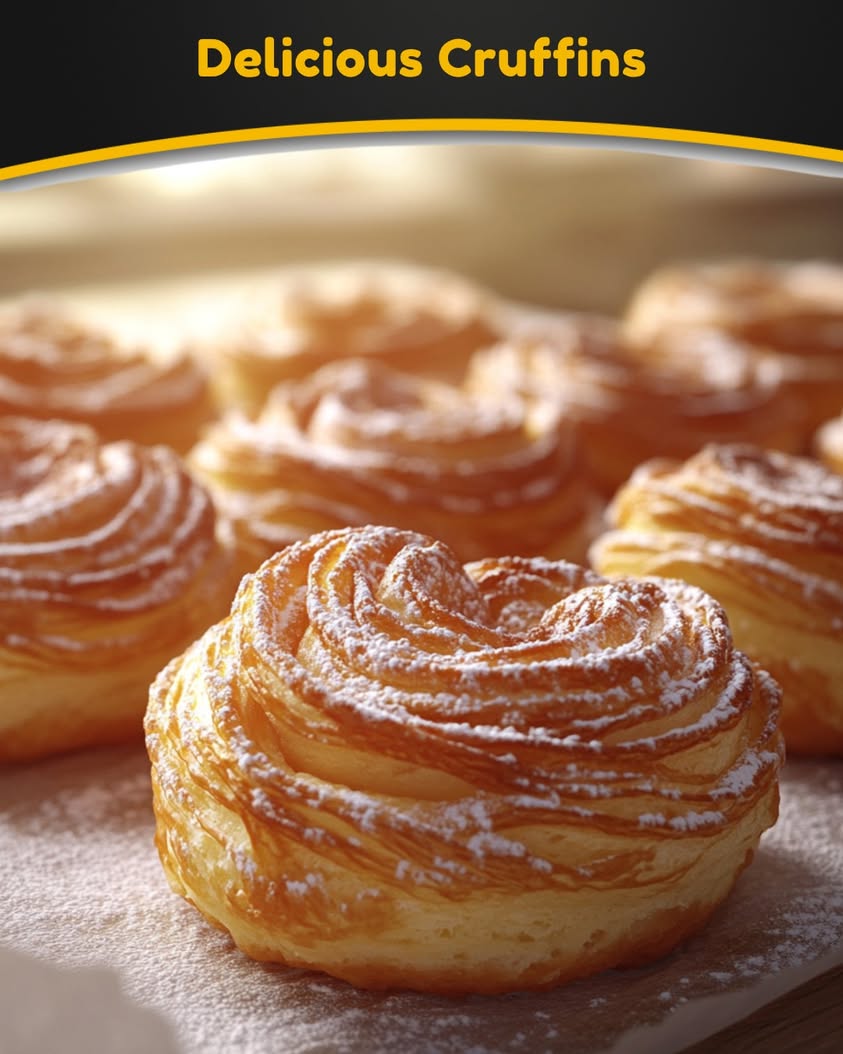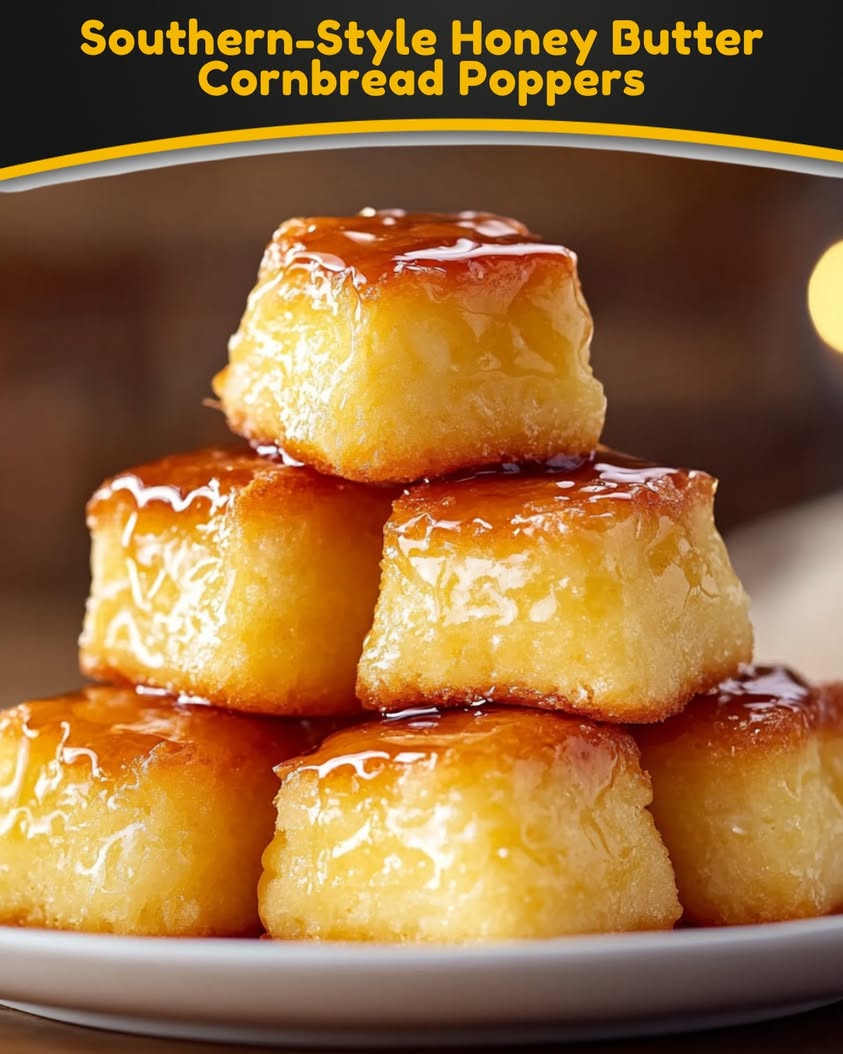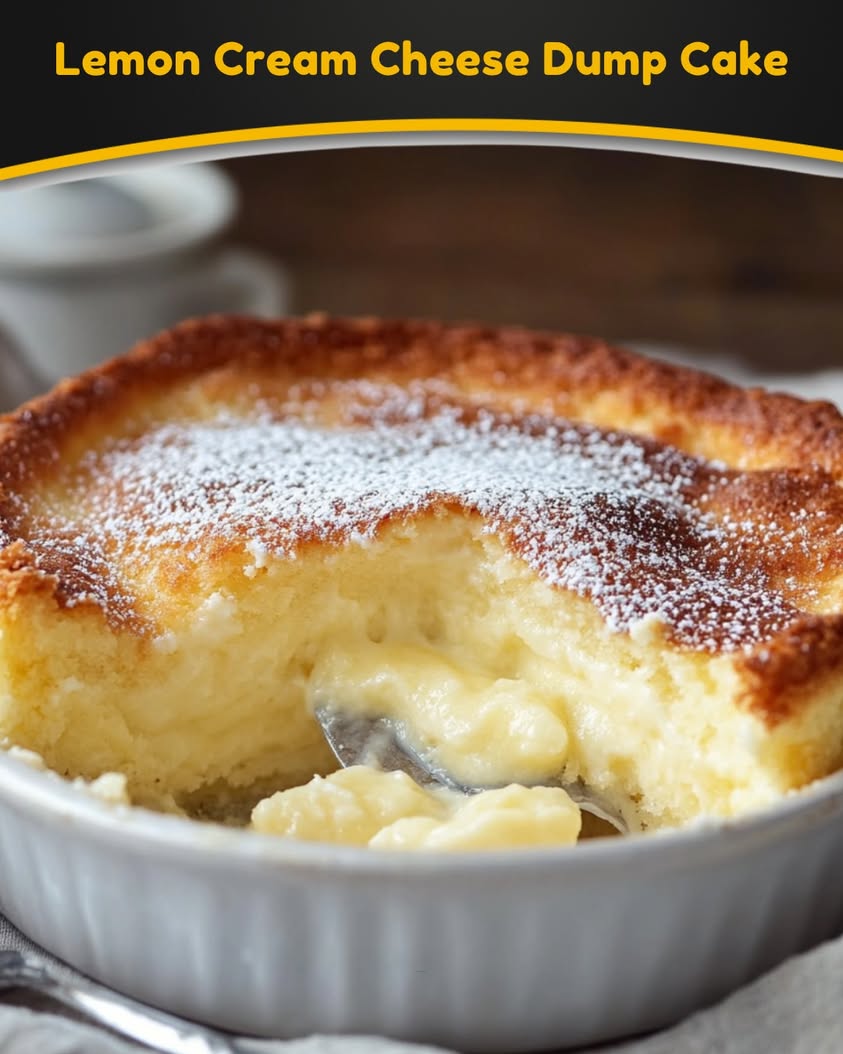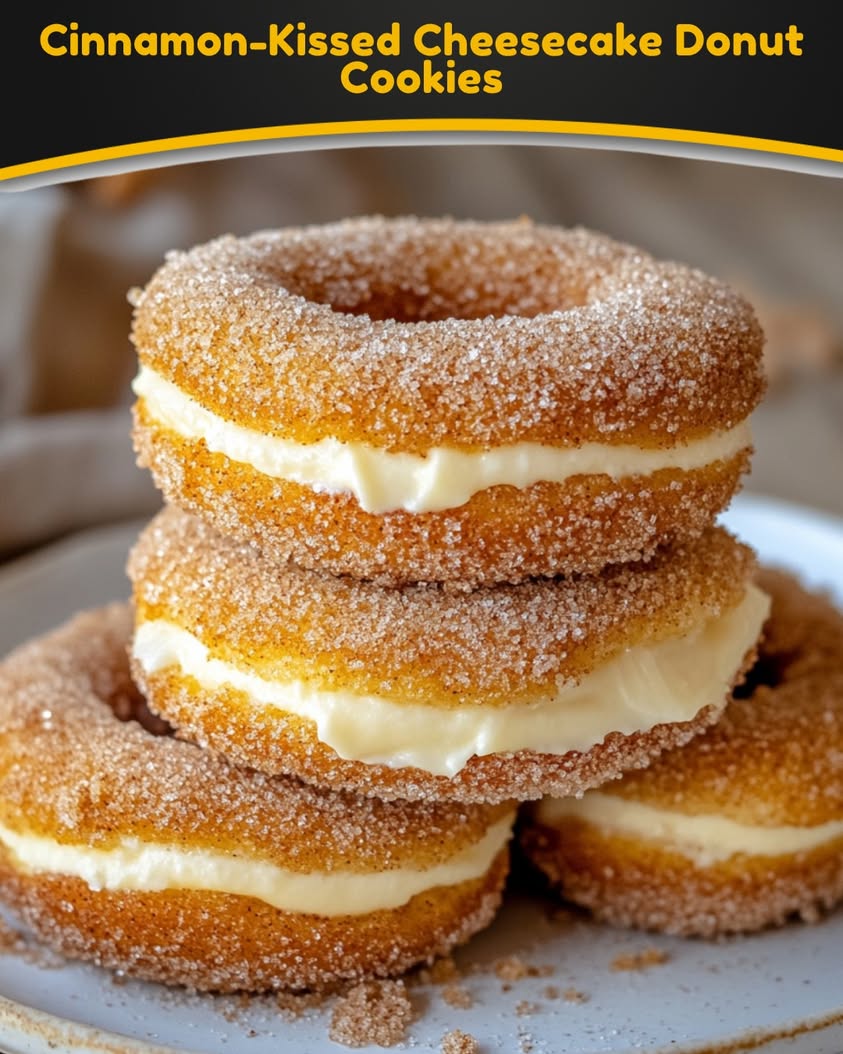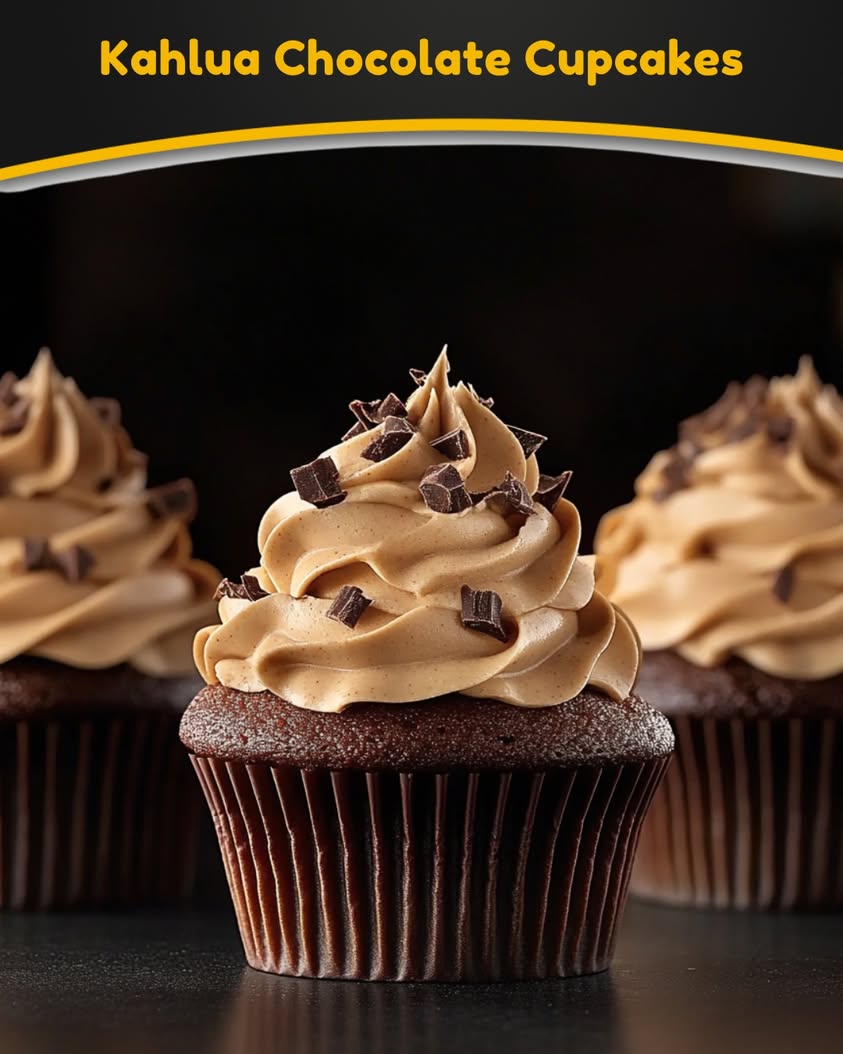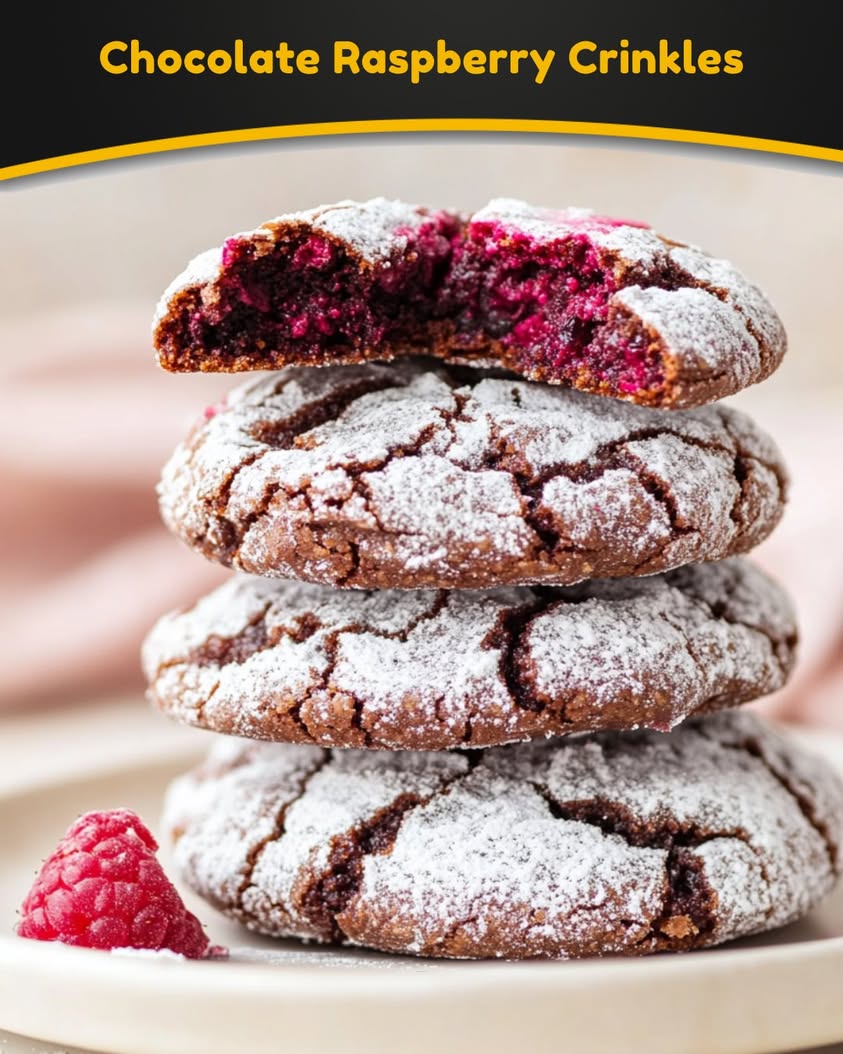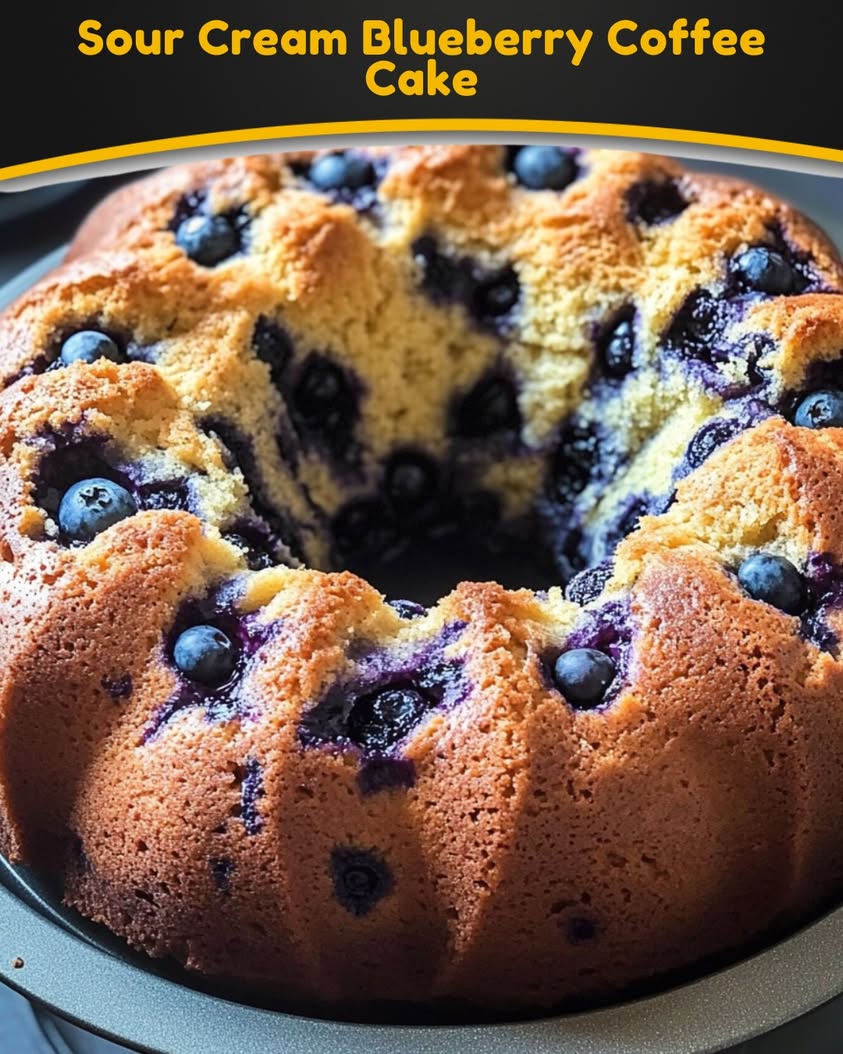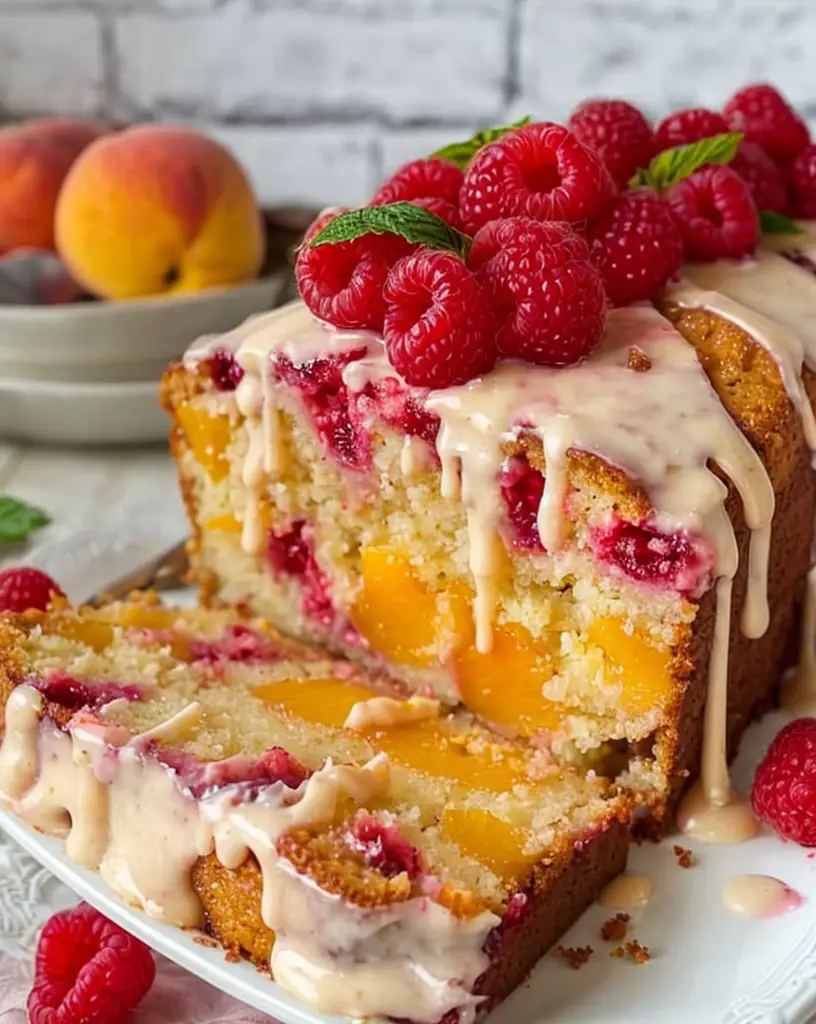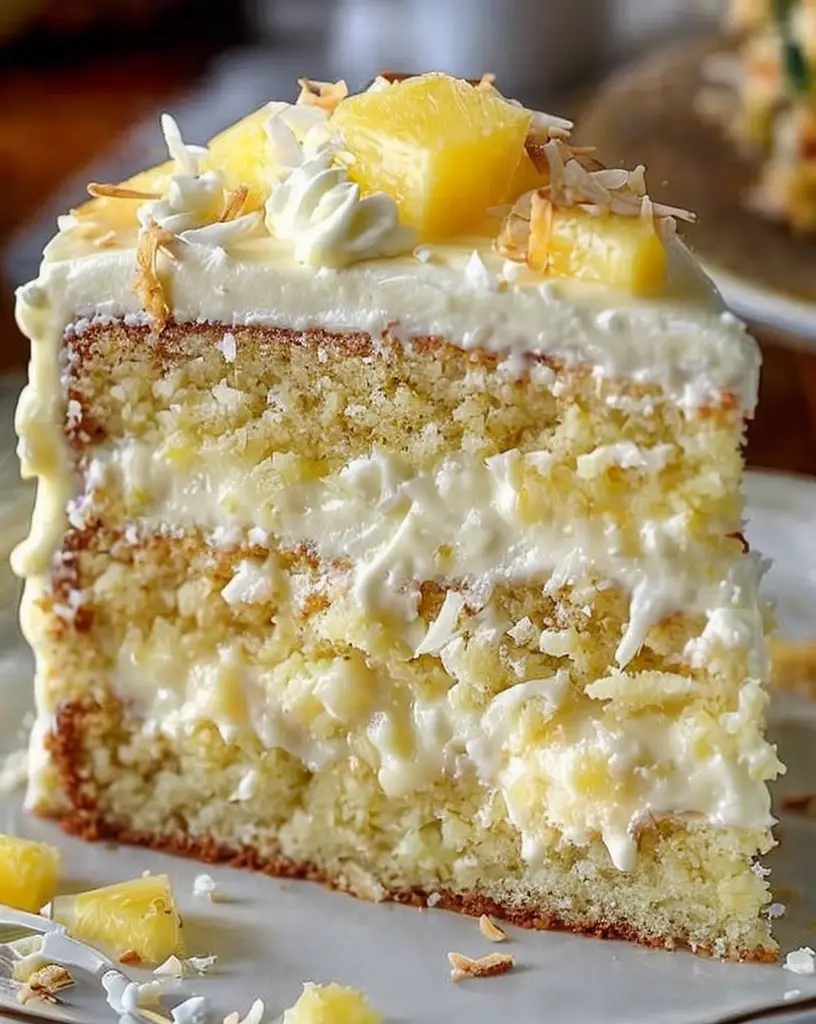Delicious Cruffins: A Delectable Pastry Delight
Welcome to the world of cruffins—where the flaky tenderness of croissants meets the delightful fluffiness of muffins! These delicious cruffins are filled with sweet delights or savory ingredients, making them the perfect accompaniment to your breakfast or afternoon tea. Whether you’re indulging in chocolate, cinnamon sugar, or fruit preserves, each bite of these delightful pastries brings a harmony of flavor and texture that will captivate your taste buds and leave you wanting more.
What sets these cruffins apart is their unique layering technique, which creates beautiful, flaky layers reminiscent of a croissant, yet shaped like a muffin. The process may seem daunting, but fear not! With a little patience and practice, this delicious recipe will be your go-to for gatherings or cozy mornings at home. Imagine these golden pastries, straight from the oven, sharing warmth and creativity among friends and family, enhancing every moment. Let’s dive into the cruffin-making adventure!
Quick Recipe Highlights
- Flavor Profile: Each cruffin boasts a buttery, sweet or savory filling, complemented by a light, flaky exterior.
- Texture: The contrast between the crispy top and the soft, airy inside makes every bite a pleasure.
- Aroma: Freshly baked cruffins fill the air with enticing buttery scents combined with your chosen flavors.
- Visual Appeal: These pastries are a feast for the eyes, showcasing layers that hint at the deliciousness within.
- Skill Level Needed: While the folding technique requires practice, the rewards are well worth the effort.
- Special Equipment: A muffin tin is essential for shaping your cruffins perfectly.
Recipe Overview
- Difficulty Level: This recipe is classified as intermediate due to the dough preparation and layering techniques required.
- Category: Perfect for breakfast or brunch, cruffins also work wonderfully as a delightful snack.
- Cuisine: Although originating from a blend of French and American culinary traditions, cruffins can be adapted to various flavors and fillings.
- Cost: With mostly pantry staples needed, these pastries are relatively economical to prepare at home.
- Season: Enjoy these flaky delights year-round; they are particularly comforting during cooler months.
- Occasion: Great for birthdays, brunches, or any time you want to impress guests with a homemade treat.
Why You’ll Love This Recipe
The delicious taste of cruffins combines the best of both muffins and croissants, creating a unique flavor experience that’s both rich and satisfying. With layers of buttery pastry melting in your mouth, combined with your choice of sweet or savory fillings, each bite offers something new, appealing to various palates. Whether filled with chocolate, fruits, or cheeses, these treats will awaken your culinary creativity and spruce up any meal.
These cruffins offer convenience without compromising on quality or taste. Despite their complex appearance, the preparation involves straightforward dough handling and filling techniques. The cruffins come together quickly, making them an excellent choice for busy mornings or last-minute gatherings. You can easily prepare the dough ahead, allowing for a quick bake whenever cravings strike.
Nutritionally, these cruffins can be made with healthier alternatives while maintaining their delicious character. Incorporating whole wheat flour or healthier sweeteners gives a nutritious twist without sacrificing flavor. This makes them a perfect indulgence, suitable for families wanting to enjoy sweet treats with more wholesome ingredients.
When hosting guests or celebrating special occasions, cruffins shine as an impressive and shareable treat. Their unique form and rich flavors create a natural conversation starter and a terrific centerpiece on any dining table. Imagine presenting your guests with a warm basket filled with these mouth-watering pastries!
Cost-effectiveness is another reason to cherish this culinary gem. With many ingredients already in store and the ability to control portion sizes, making cruffins at home can be significantly cheaper than purchasing them from cafes. This recipe encourages experimentation, allowing you to explore various flavors and fillings at minimal costs.
Historical Background and Cultural Significance
The cruffin is a modern pastry, a delightful invention that combines the well-loved characteristics of croissants and muffins. This innovative treat emerged from the creative minds of pastry chefs, particularly in the culinary melting pot of California. With its rich buttery layers and sweet or savory fillings, the cruffin has swiftly gained popularity, becoming a brunch staple among food enthusiasts.
Culturally, cruffins resonate with the growing trend toward hybrid foods that showcase culinary creativity and playful flavors. They blur the lines between traditional pastries and innovative baked goods, making them an exciting addition to any baker’s repertoire. Their rise in popularity has also paved the way for numerous adaptations, each reflecting local tastes and influences.
The evolution of the cruffin showcases the culinary innovation that characterizes modern baking. As bakers experiment with fillings and flavor combinations, the cruffin has transformed from a novelty to a sought-after pastry in cafes and homes alike. This evolution highlights how traditional techniques can be reimagined while still paying homage to classic baking methods.
Regional variations of cruffins have begun to emerge, with bakeries offering unique takes on the original recipe. From tropical-inspired fillings to spicy savory options, these adaptations celebrate local flavors and ingredients, further enriching the cruffin’s legacy and inviting even more bakers to join in the fun of cruffin-making.
Ingredient Deep Dive
The staple ingredient for cruffins is dough, typically made with high-quality flour and butter. Flour has been a central component of baking for millennia, providing structure and texture to countless recipes. For cruffins, using all-purpose or bread flour contributes to the pastry’s flakiness. For a nutritious spin, whole wheat flour can be used, adding fiber and depth to the flavor.
Butter is the star that brings richness to cruffins. Traditionally used in pastries, it enhances flavor and creates that desirable flaky texture. Look for unsalted butter for more control over the sweetness of your cruffins. For healthier alternatives, coconut oil or even plant-based butter can yield similar results while catering to dietary preferences.
Fillings for cruffins can range from chocolate chips, fruit preserves, or cream cheese, providing endless options. Chocolate has a universal appeal and adds a rich, decadent taste to your creations, while fruit preserves introduce a zingy freshness. Opt for seasonal fruit preserves for added flavor or use cream cheese for a savory touch, reminding us of the versatility of this delightful pastry.
Sugar plays a critical role in balancing flavors in dough and fillings. Granulated sugar is commonly used, but alternative sweeteners like honey or agave syrup can provide unique flavor profiles. Always choose methods based on desired sweetness and dietary needs, ensuring that the cruffins meet everyone’s tastes.
Common Mistakes to Avoid
- Overworking the dough: This can result in tough pastries instead of the desired flaky texture. Handle the dough gently to maintain its lightness.
- Using the wrong flour: All-purpose flour works best for this recipe; avoid using cake flour, as it may lead to a dense cruffin.
- Skipping the chilling step: Allowing the dough to chill enhances its flakiness, essential for achieving that perfect texture.
- Not preparing your muffin tin: Greasing the muffin tin thoroughly ensures the cruffins release easily after baking.
- Overfilling the cruffins: Too much filling can cause the pastry to overflow, leading to messy results. Keep filling amounts moderate to avoid spills.
- Underbaking: Ensure the cruffins are visibly golden on top; this guarantees they’ve baked through and will have the ideal texture.
- Ignoring ingredient temperature: Using cold butter is crucial for flaky layers. Allowing ingredients to reach room temperature can alter the final product.
- Inadequate proofing time: Allow enough time for the dough to rise; this step is vital for flavor development and optimal texture.
- Not experimenting with flavors: Sticking to just one filling can be monotonous; don’t hesitate to explore various fillings for diversity.
- Not following the recipe proportions: Accurate measurements ensure balanced flavors and texture. Always use a scale for precise results.
Essential Techniques
One of the most important techniques in making cruffins is rolling and folding the dough properly. This method creates the distinct layers expected in flaky pastries. Start by rolling out the dough and folding it into thirds repeatedly, allowing layers of butter to create that sought-after flakiness. Keep the butter cold to achieve optimal results during baking.
Another key technique involves filling the cruffins evenly and judiciously. Filling them to just below the brim will allow for expansion while preventing overflow. Additionally, using a spoon or piping bag for even distribution aids in consistently delicious bites. Practice makes perfect; don’t hesitate to adjust your filling method as needed.
Pro Tips for Perfect Cruffins
Use high-quality ingredients for the best flavor. Invest in fresh butter, premium flour, and organic fillings for a superior pastry experience. Quality influences both taste and texture, ensuring your cruffins shine.
Chill the dough between steps. If you notice the dough getting warm while working, return it to the refrigerator for a quick chill. Keeping the dough cold is vital to achieving those lovely layers when baked.
Experiment with different fillings. Whether you gravitate towards sweet or savory, don’t be afraid to mix things up. From chocolate and raspberry to cheese and bacon, the options are limitless!
Watch your oven closely. Every oven is different, so begin checking for doneness a few minutes earlier than the suggested time. The perfect cruffin should be golden brown and slightly puffed.
Make sure to rotate the muffin tin halfway through baking. This ensures even baking, especially if your oven has hot spots, resulting in uniformly cooked cruffins.
Consider gluten-free options. If you or your guests have gluten sensitivities, use gluten-free flour blends to create equal parts deliciousness without the gluten.
Rest your cruffins. Allow them to cool for a few minutes before removing from the pan. This resting time helps maintain their structure as they cool.
Lastly, have fun! Baking is about creativity. Make this recipe your own by adding local flavors, seasonal ingredients, or personal touches that reflect your unique taste.
Variations and Adaptations
Regional variations of cruffins often reflect local tastes. Try incorporating spices like cinnamon or nutmeg into the dough for warmth or consider fillings that highlight seasonal fruits such as cranberries during the fall.
Seasonal adaptations can make cruffins even more enticing. In summer, use fresh strawberries or peaches, while winter might call for richer fillings like toffee or chestnut cream. These options keep your recipes aligned with nature’s bounty and add excitement throughout the year.
Dietary modifications are easy with cruffins. For a vegan twist, substitute eggs with flaxseed meal and butter with plant-based alternatives. You can enjoy the delightful texture and flavor without sacrificing dietary choices.
For flavor variations, consider experimenting with herbal or spicy additions. Savory cruffins filled with cheese, fresh herbs, or even jalapeños create an exciting aspect to what is often considered a sweet pastry.
Texture modifications could involve adding nuts for a delightful crunch or using almond flour for a different texture experience. Adjustments alter the pastry’s mouthfeel while enhancing flavor complexity.
Presentation alternatives can elevate your cruffins beyond what’s expected. Try dusting powdered sugar on top or drizzling caramel or chocolate sauce to create elegant dessert pastries that delight the eye as much as the palate.
Serving and Presentation Guide
Plating your cruffins can be a fun part of serving! Arrange them on a decorative platter or tiered stand for a visually striking display. Layering them also adds height and visual interest.
To elevate the presentation, consider garnishing with edible flowers or fresh herbs, which contrast beautifully against the flaky pastry. You can also serve with a small bowl of fresh fruit or whipped cream for dipping.
Traditional accompaniments could include fluffy whipped butter or rich cream cheese spread, enhancing the cruffin experience. Provide a variety of spreads so guests can personalize their flavors according to their taste preferences.
Modern serving suggestions might involve pairing these pastries with artisanal coffee or herbal tea, which complements their flavors and makes for a cozy or sophisticated gathering.
Temperature considerations play a crucial role in serving. Warm cruffins out of the oven provide the best experience, but if prepared ahead of time, gently reheating ensures they maintain their original allure.
Portion control tips involve cutting each cruffin in half if serving as part of a larger spread, allowing guests to sample various flavors without feeling overwhelmed by a single pastry.
Wine and Beverage Pairing
When it comes to wine pairings, look for a light and slightly sweet white, such as a Riesling or a Moscato, which can beautifully complement sweet cruffins. Sparkling wines also work well, bringing a refreshing contrast to rich, buttery pastries.
If you’re serving savory cruffins, opt for a dry Sauvignon Blanc or a fruity rosé. These wines can enhance the flavors while balancing the richness of the pastry, creating a harmonious dining experience.
For non-alcoholic alternatives, consider pairing with fruity iced tea or a refreshing lemonade, elevating flavors while providing guests with a vibrant and exciting experience.
When it comes to coffee and tea pairings, consider an aromatic, medium-roast coffee for sweet variations. A herbal tea can also provide a delightful contrast without overshadowing the delicate flavors of the cruffins.
Temperature considerations are essential; serve white wines chilled, while red wines can be enjoyed slightly below room temperature. Keep coffees hot for that rich, comforting flavor that pairs excellently with pastries.
Serving suggestions might include presenting beverages in decorative cups or glasses alongside the cruffins, creating an inviting atmosphere that encourages guests to indulge and enjoy.
Storage and Shelf Life
To store cruffins, place them in an airtight container at room temperature for up to two days. For longer storage, you can refrigerate them, which enhances longevity while still maintaining their delicious flavor.
When freezing cruffins, make sure they are completely cooled and then wrap them tightly in plastic wrap or aluminum foil. Properly stored, they can last up to three months while still preserving their taste and texture during thawing.
Keep an eye out for signs of spoilage, such as unusual odors or excessive dryness. Fresher pastries are always preferable; it’s best to consume them when they are at their optimum flavor.
Reheating your cruffins can reinvigorate their flaky texture. Use a microwave for quick heating but consider a toaster oven or conventional oven for a crispier finish that mirrors their fresh-baked sensation.
For additional flexibility, feel free to freeze the pastry dough before shaping it into cruffins. This way, you can enjoy freshly baked pastries at a moment’s notice, making it easier to impress guests or satisfy cravings spontaneously.
Make Ahead Strategies
When prepping the dough, consider making it the night before, allowing adequate chilling time. Once prepared, you can store your rolled dough in the refrigerator overnight, ready to shape and bake whenever you desire.
Storage between steps can be managed effectively by keeping your filling stored separately. Prepared fillings can be stored in the fridge for a few days, allowing for quick assembly when you are ready to bake.
Quality impact assessment is crucial; dough components can vary based on how long they are stored. Always inspect your stored ingredients before assembling your cruffins to ensure the best results.
For assembly tips, organize your workspace to streamline the filling and shaping process. Having all ingredients nearby reduces preparation time and allows a smoother flow to your baking day.
Reheating guidelines suggest warming at a low temperature until warmed through, ensuring the buttery layers retain their flakiness and delightful texture once again.
Lastly, don’t forget about adding fresh elements when serving. Consider topping baked cruffins with fresh fruits or drizzles of glaze just before serving for a vibrant presentation and to captivate guests even more.
Scaling Instructions
For halving the recipe, simply divide all ingredients and adjust your baking time to ensure that the quantities cook through evenly. Scaling down makes it perfect for smaller gatherings or a personal treat.
When doubling or tripling, consider using multiple muffin tins to bake at once. Ensure that each tray has adequate spacing for air circulation, allowing for even cooking that doesn’t compromise texture.
Equipment adjustments might include varying baking sheets or muffin tins, as necessary. Check them halfway to ensure uniform baking, especially when dealing with larger batches.
Timing modifications should observe closely; larger quantities can take a bit longer to bake through, so check doneness with a toothpick to ensure proper cooking without overbaking.
Storage considerations for leftover cruffins can be handled similarly to the original recipe but keep in mind that larger batches might require multiple storage containers to maintain freshness.
Nutritional Deep Dive
The macro breakdown of cruffins primarily revolves around carbohydrates from the flour, fats from the butter, and sugars from any fillings and toppings. This rich balance makes them decadent yet satisfying when enjoyed mindfully.
In terms of micronutrient analysis, depending on the ingredients used, cruffins can offer key vitamins and minerals such as calcium from dairy and vitamin C if fruit fillings are added. Adaptations in recipes can enhance these nutrient profiles as well.
Health benefits come in various forms; for instance, incorporating whole grains or fruits can increase fiber intake. The inclusion of sweet potatoes or pumpkin in fillings can add beta carotene and lower overall sugar content.
Dietary considerations can be made, especially for customizations and healthier adaptations. By using alternative flours and sweeteners, these pastries can accommodate gluten-free or lower-sugar diets without sacrificing much flavor.
As with portion analysis, moderation is key. While cruffins are delicious, enjoying in reasonable amounts helps maintain balance within desserts in your eating plan. They can be made versatile through creativity in serving.
For those focusing on weight management, recreating cruffins with more wholesome ingredients allows enjoyment without the guilt. Opting for seasonal vegetables in savory versions can enhance both nutrients and flavor.
Dietary Adaptations
For gluten-free cruffins, utilize a high-quality gluten-free flour blend to recreate that delightful texture without the gluten. Always check ingredient labels to ensure a completely gluten-free experience.
Dairy-free options can be managed through substituting butters and creams with plant-based alternatives, making it easier to cater to a variety of dietary restrictions in your baking endeavors.
Vegan adaptations can transform this recipe stunningly. By using flaxseed meal or applesauce as binding agents, you can achieve the perfect texture while keeping everything plant-based and delicious.
Low-carb enthusiasts can swap traditional flour with almond or coconut flour, thereby creating scrumptious cruffins that fit within ketogenic diets while still being flavorful and satisfying.
Paleo-friendly versions can utilize natural sweeteners like honey or maple syrup, removing refined sugars altogether, ensuring the cruffins align with paleo dietary goals while enhancing their flavors authentically.
Low-FODMAP options can focus on specific fibers in fillings and minimizing garlic or certain fruits. These adaptations allow those with sensitivities to enjoy cruffins without discomfort, focusing on suitable ingredients.
Troubleshooting Guide
Texture issues can arise if the dough is overworked. Avoid persistent kneading to prevent dense cruffins. For the desired flakiness, allow layers to remain distinct and handle the dough delicately.
Flavor balance might be off if not adequately adjusted. Taste your fillings or batter before baking; flavor concentrates while baking, so it’s crucial to find your sweet or savory notes before they’re settled.
Temperature problems can occur in improperly preheated ovens. Always preheat your oven properly to the suggested temperature before placing your cruffins inside, ensuring that they rise evenly right from the start.
Equipment challenges can arise if you’re unfamiliar with using different types of muffin tins. Familiarize yourself with how your specific tools heat and cook; follow cooking times and adjust according to your equipment’s quirks.
Ingredient substitutions require careful planning. Each ingredient can alter the overall flavor and texture; understanding how to replace them correctly ensures success even when adapting the recipe.
Timing concerns can often be improved by following the guidance of the recipe strictly. Adjust for your own baking environment, but maintain the ingredient proportions to achieve tasty results at the right times.
Recipe Success Stories
Feedback from the community indicates that cruffins are a favorite treat amongst brunch lovers and bakers alike. Many users noted how versatile the recipe could be, catering to both sweet and savory palates seamlessly.
Variations of cruffins have become a recurring topic, with bakers sharing their personalized takes, from tropical-inspired to decadent chocolate variations. Everyone appreciates being able to put their twist on this classic treat.
Adaptation stories showcase the ability of this recipe to incorporate seasonal ingredients, which resonates with many bakers seeking to enhance flavor profiles while prioritizing local produce in their creations.
Readers have delighted in sharing their photographic success; showcasing beautiful golden cruffins has encouraged others to dive into their own cruffin-making adventures. Enthusiasts often come together to create new blends and designs.
Photography tips regarding food styling and natural lighting have enabled bakers within the community to elevate their presentation of cruffins, ultimately allowing them to become more engaging for social media sharing and gatherings.
Frequently Asked Questions
1. Can I prepare the dough in advance?
Absolutely! You can prepare and chill the dough a day in advance. Chill it properly to enhance the flakiness when baked.
2. What should I do if my cruffins are dry?
If your cruffins are dry, ensure proper storage techniques are used, and consider adjusting ingredient ratios next time for a moist outcome.
3. Can I use different types of fillings for cruffins?
Certainly! Feel free to experiment with both sweet and savory fillings, such as fruits, chocolate, or cheese to tailor the recipe to your taste.
4. How do I store leftover cruffins?
Store cruffins in an airtight container at room temperature for up to two days or refrigerate for longer freshness. Reheat before serving for the best experience.
5. What is the best way to serve cruffins?
Arrange on platters with complementary spreads, or include garnishes like fruit or herbs to elevate the presentation and enhance flavors.
6. Can I make cruffins dairy-free?
Yes, use plant-based butter and non-dairy fillings to create a deliciously dairy-free version of cruffins without sacrificing texture.
7. How long do cruffins last in the freezer?
When properly wrapped, cruffins can be stored in the freezer for up to three months. Just thaw gently before reheating to enjoy.
8. Can I make cruffins gluten-free?
Yes! Use high-quality gluten-free flour blends in place of all-purpose flour to maintain the texture while keeping them gluten-free.
9. Are cruffins suitable for kids?
CRUD-based flavored fillings often appeal to children. Opt for sweet fillings like chocolate or fruit to cater to young taste buds.
10. What type of muffin pan is best for cruffins?
A standard muffin pan works best, but silicone pans can also create easy release and shape retention for your cruffins!
Additional Resources
Explore related recipes that elevate your baking skills, such as classic croissants or muffins with unique flavors. Each recipe adds depth to your culinary repertoire and experimentation will yield delicious results.
Dive into technique guides that can help you master pastry skills, including tips for kneading, shaping, and baking to ensure your baking remains consistent and enjoyable.
Ingredient information is vital for success. Learn about the different types of flour, butters, and fillings to make informative choices that enhance your baking experience.
Consider equipment recommendations that assist in baking your cruffins, such as high-quality measuring cups and mixing bowls that make prep easier and more efficient.
Seasonal variations can enhance your cruffin recipes, allowing bakers to utilize fresh, local produce to create new, exciting flavors that elevate this classic pastry.
Join the Conversation
We’d love to hear about your cruffin experiences! Share your successes, adaptations, and stories across social media platforms. Use hashtags that connect with fellow bakers and followers of flakiness!
Photography tips are encouraged within our community. Capture the beauty of your baked goods in natural light and engage more actively with viewers interested in your creations.
Get involved with recipe reviews that help refine existing recipes, as feedback leads to improvement, promising future bakers greater joy in their culinary journey.
Feel free to share how you’ve adapted recipes and allowed them to fit personal taste. Engage with your audience through comments and questions, creating a sense of community around cruffin-making!
Explore new culinary techniques together, fostering creativity in the making, enjoying the beauty of baking, and savoring cruffins while sharing the love of food.
The Recipe
Delicious Cruffins
Serves: 12
Prep Time: 30 mins
Cook Time: 25 mins
Total Time: 55 mins
Kitchen Equipment Needed
- Muffin tin
- Rolling pin
- Mixing bowls
- Spatula or wooden spoon
- Plastic wrap
- Measuring cups and spoons
Ingredients
- 2 cups all-purpose flour
- 1/2 cup unsalted butter (melted)
- 1/4 cup granulated sugar
- 1/2 cup warm milk
- 1 packet (2 1/4 tsp) of instant yeast
- 1/2 tsp salt
- 1 egg
- 1/2 cup of chocolate chips (or preferred filling)
Directions
- In a bowl, mix warm milk and yeast, allowing it to activate for about 5 minutes.
- Combine melted butter, sugar, salt, and the egg in a large mixing bowl.
- Add activated yeast mixture and flour gradually, mixing until a dough forms.
- Knead the dough on a floured surface until smooth and elastic.
- Cover with plastic wrap and let rise for about 1 hour.
- Roll out dough into a rectangle, and spread melted butter, sugar, and desired fillings evenly.
- Fold and cut the dough into strips, rolling them into a cruffin shape in muffin tins.
- Let them rise again for 30 minutes, then bake at 375°F for 25 minutes or until golden.
Recipe Notes
- Feel free to experiment with various fillings to customize your cruffins.
- Make sure to cover the muffins to prevent drying out while they rise.
- Store any leftovers in an airtight container to maintain freshness.
